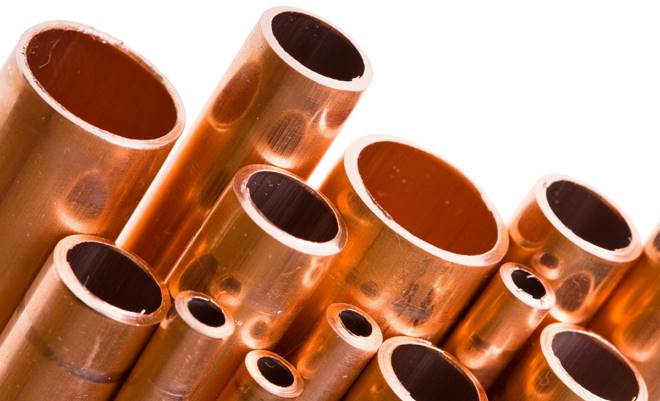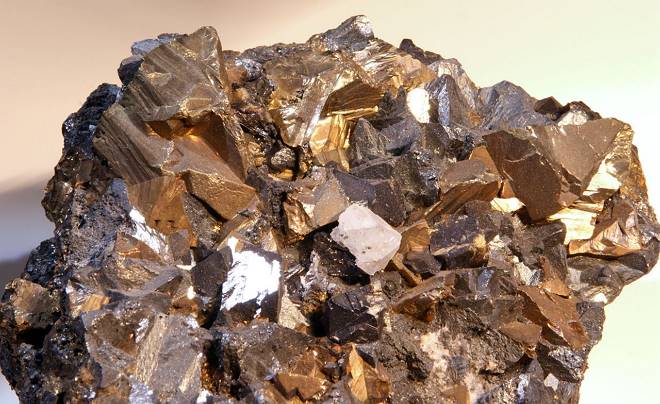
Copper density and its specific weight are units, examples of weight calculation
Density of copper (clean), whose surface is reddish, and in the fracture of the pink hue, high. In accordance, this metal has a significant specific weight. Due to its unique properties, primarily excellent electro- and thermal conductivity, copper is actively used for the production of elements of electronic and electrical systems, as well as products for other purposes. In addition to pure copper, its minerals are also of great importance for many industries. Despite the fact that in the nature of such minerals there are more than 170 species, active application found only 17 of them.

Copper is widely used in production
The value of copper density
The density of this metal, which can be seen in a special table, matters, equal to 8,93 * 103 kg / m3. You can also see another in the table, no less important, than density, characteristic of copper: its share, which is also equal to 8,93, but measured in grams per cm3. As you can see, in copper the value of this parameter is the same, as density, but don't think, that this is characteristic of all metals.
The density of this, and any other metal, which is measured in kg / m3, directly affects that, what weight the products will have, made of this material. But to determine the mass of the future product, made of copper or its alloys, example, of brass, it is more convenient to use the value of their specific weight, rather than density.
Calculation of specific gravity
To date, many methods and algorithms for measuring and calculating not only density, but also specific weight, allowing to define this important parameter even without the help of tables. Knowing the specific gravity, which is different in different alloys of copper and pure metal, as well as the value of density, you can effectively select materials for the production of parts with specified parameters. Such measures are very important to perform at the design stage of devices, in which it is planned to use details, made of copper and its alloys.
Specific weight, the value of which (as well as density) you can see in the table - this is the ratio of the weight of the product, made of metal, and from any other homogeneous material, to its extent. This relation is expressed by a formula? = P / V, where the letter? just and affects the proportion.
The specific gravity and density should not be confused, which are different characteristics of the metal in nature, although they have the same value for copper.
Knowing the specific gravity of copper and using the formula to calculate this value? = P / V, you can determine the mass of the copper billet, having a different dissection. To do this, multiply the value of the specific gravity for copper and the volume of the workpiece, determine which calculation is not special ??complexity.
Units of specific gravity
Different units are used to express the specific gravity of copper in different measurement systems.
- In the GHS system, this parameter is measured in 1 din / sm3.
- The SI unit of measurement is accepted 1 n / m3.
- The ISS system uses a unit of measurement 1 kg / m3.
If you are faced with different units of measurement of this parameter of copper or its alloys, it is not difficult to translate them into each other. You can use a simple translation formula, which is as follows: 0,1 din / sm3 = 1 n / m3 = 0,102 kg / m3.

Copper-containing ore before processing
Calculation of weight using the value of specific gravity
To calculate the weight of the workpiece, you need to determine the area of its cross section, and then multiply it by the length of the part and the specific gravity.
Example 1:
Calculate the weight of the rod of copper-nickel alloy MNZh5-1, whose diameter is 30 millimeters, and length - 50 meters.
The cross-sectional area is calculated by the formula S =? R2, so: S = 3,1415 · 152 = 706,84 mm2 = 7,068 sm2
Knowing the specific gravity of copper-nickel alloy MNZh5-1, which is equal to 8,7 city / sm3, we will receive: M = 7,068 · 8,7 · 5000 = 307458 gram = 307,458 kg
example 2
Calculate the weight of 28 sheets of copper alloy M2, the thickness of which is 6 mm, and dimensions 1500x2000 mm.
The volume of one sheet will be: V = 6 · 1500 · 2000 = 18000000 mm3 = 18000 sm3
Now, knowing, that proportion 1 cm3 of copper brand M3 is equal to 8,94 city / sm3, we can find out the weight of one letter: M = 8,94 · 18000 = 160920 UAH = 160,92 kg
The weight of all 28 sheets will be: M = 160,92 · 28 = 4505,76 kg
Example 3:
Calculate the weight of a square rod of BrNHK copper alloy in length 8 meters and side size 30 mm.
Determine the volume of total rental: V = 3 · 3 · 800 = 7200 sm3
The specific weight of the specified heat-resistant alloy is equal to 8,85 city / sm3, hence the total weight of the rental will be: M = 7200 · 8,85 = 63720 gram = 63,72 kg




